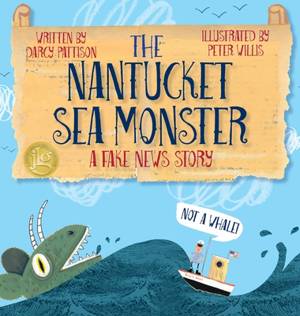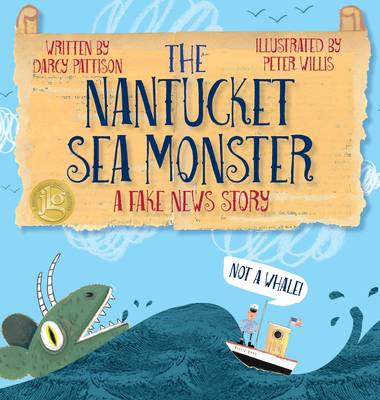
- Afhalen na 1 uur in een winkel met voorraad
- Gratis thuislevering in België vanaf € 30
- Ruim aanbod met 7 miljoen producten
- Afhalen na 1 uur in een winkel met voorraad
- Gratis thuislevering in België vanaf € 30
- Ruim aanbod met 7 miljoen producten
Omschrijving
Discuss fake news with kids without the politics! Perfect digital media literacy book for children.
A JUNIOR LIBRARY GUILD SELECTION
A CLA NOTABLE CHILDREN'S BOOK IN LANGUAGE ARTS
How do you spot a fake new story?
Kids, do you believe everything you read in the newspaper? The U.S. has a "free press," which sets up the possibility of fake news. This story teaches media literacy for children, ages 7-12.
Early in August 1937, a news flash came: a sea monster had been spotted lurking off the shore of Nantucket Island. Historically, the Massachusetts island had served as port for whaling ships. Eyewitnesses swore this wasn't a whale, but some new, fearsome creature. As eyewitness account piled up, newspaper stories of the sea monster spread quickly. Across the nation, people shivered in fear. Misinformation? Fake news? Or true?
Then, footprints were found on a Nantucket beach. Photographs were sent to prominent biologists for their opinion. Discussion swirled about raising a hunting party. On August 18, news spread across the island: the sea monster had been captured. Islanders ran to the beach and couldn't believe their eyes.
This nonfiction picture book is a perfect tool to discuss non-political fake news stories.
"A thought provoking story with timely resonance." Kirkus Reviews
Kids will:
- Read a true fake-news book about puppeteer, Tony Sarg, creator of the Macy's Thanksgiving Day parade balloons.
- Learn to spot fake news, whether the sea monster was real-or just a giant balloon.
- Learn digital literacy, grades 2-5, ages 7-12
- Perfect companion book for Balloons Over Broadway, by Melissa Sweet, the biography of puppeteer Tony Sarg, who created Macy's Thanksgiving Day Parade balloons, as upside down puppets.
- Perfect for Thanksgiving, when kids watch the Macy's Thanksgiving Day Parade balloons.
- Discuss freedom of the press and how it often leads to fake news.
Back matter discusses the freedom of the press (or "free press") guaranteed by the First Amendment to the U.S. Constitution. Quotes from Thomas Jefferson make it clear that fake news has always been one of the costs of a free press. A Timeline lists actual events in the order they occurred. A vocabulary list defines relevant words. Read this with kids for the Thanksgiving holiday--great read aloud.
Specificaties
Betrokkenen
- Auteur(s):
- Illustrator(s):
- Uitgeverij:
Inhoud
- Aantal bladzijden:
- 34
- Taal:
- Engels
- Leeftijd:
Eigenschappen
- Productcode (EAN):
- 9781629440828
- Verschijningsdatum:
- 12/09/2017
- Uitvoering:
- Hardcover
- Formaat:
- Genaaid
- Afmetingen:
- 216 mm x 216 mm
- Gewicht:
- 312 g

Alleen bij Standaard Boekhandel
Beoordelingen
We publiceren alleen reviews die voldoen aan de voorwaarden voor reviews. Bekijk onze voorwaarden voor reviews.








